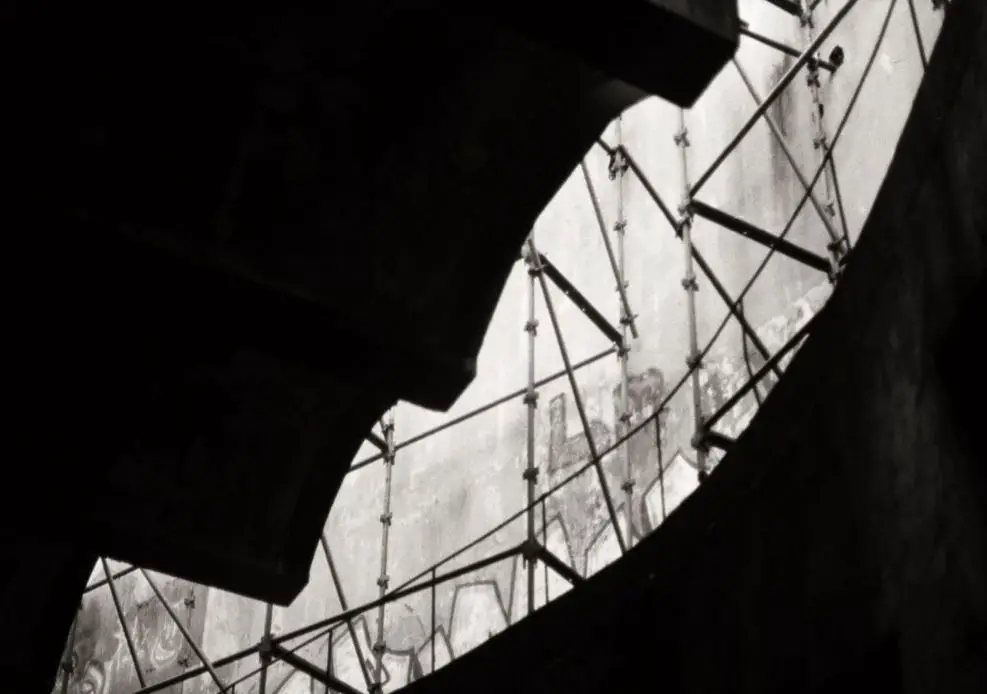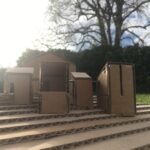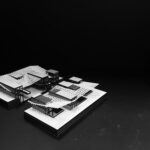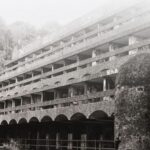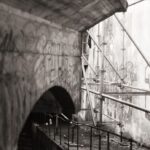Saint Peter’s Seminary Cardross Study Part Two, Modern Scottish Architecture, Architectural Education Dissertation
Saint Peter’s Seminary Cardross Building Study Part 2
29 November 2021
Third Year Architectural Dissertation by Daniel Lomholt-Welch, Scotland
Daniel Lomholt-Welch
Architecture MA(Hons) Dissertation
Saint Peter’s Seminary Cardross Building – Corpus Incorporeum
2. Corpus Incorporeum
In his book titled Being Singular Plural, the French philosopher Jean-Luc Nancy advocates his theory of the ‘singular plural’, which develops upon the notion of Being (‘Dasein’) proposed by Heidegger.[1] Put simply, Nancy’s theory highlights that the identity of singularities can be found only in their ‘relation’ to other singularities: what exists finds itself in being exposed or being in contact with other singularities in such a way that nothing exists or makes sense on its own.[2] Building upon Heidegger’s ideology of Being, Nancy stresses that instead of simply ‘being’, we are always ‘being “with”’. This leads to the summary that within the ‘oneness’ of the world that is a key tenet of Heidegger’s philosophy, there are plural singularities which exist in relation to each other.[3] The integration of ‘with’ into that key statement results in the equality of ontological priority between ‘I am’ and ‘We are’, a subject which is investigated by Nancy in his book Ego Sum.[4] By saying ‘We’, it opens up the world as the infinite movement of fact and sense towards one another and we expose the singularity of finite beings as plural singularity.[5]
The key example explored by Nancy in terms of plural singularity is that of the arts. The German philosopher Georg Hegel pronounces art as ‘the sensuous presentation of the idea’, an ideology which attempts to subsume the arts into one overreaching category of art. He also contends that art is also the dissolution ‘of its own end in the element of thought’.[6] This generates the conclusion that art is the tension between the poles of multiple singularity and unity.[7] Heidegger also attempts to contain the arts within one overreaching category, namely poetry – he claims art to be the ‘poetising of truth’. He believes that poetry was the subcategory of art most similar in nature to that of human thought, and therefore gave primacy to it in its role as the encompassing classification of art.[8] Each of these beliefs, while differing in content, speak of the same ultimate singularity of art. Nancy retaliates against this, claiming that instead of art existing as a totality of its subcategories, it only occurs at the interstices of these subcategories.[9] This is typical of Nancy’s resistance to overarching totalities, attempting to highlight the role of the fragment wherever possible.
Recalling Hegel’s definition of art as being inextricably reliant on sense, in conjunction with Descartes view that the body is the realm of the sense,[10] it may be prudent to turn our attention back to ‘the body’ which provides the basis for Nancy’s development of Heidegger’s Dasein. For Nancy, the world itself does not constitute a body as such, but that is constituted of bodies. He continues, building upon Gaston Bachelard’s ‘materialism of matter’ to denote that the ontology of ‘being-with’ must not focus upon the substance of that ontology, but rather upon the nature of that very ‘being-with’, irrespective of physical location or substance.[11] He emphasises that the relation between singular bodies is precisely not-bodied. This, the incorporeal, is actually what allows bodies to be perceived as being singular.[12]
The plural singularity of the body implies plural singular embodiment, therefore also inferring concurrent disembodiment associated with such bodies. In order to delve deeper into this investigation, it is useful to analyse disembodiment in the case of the specific example of Saint Peter’s Seminary. Taking Nancy’s definition of ontology to be true, Saint Peter’s thus exists as a singular body in relation to others, forming the oneness of the world. As a functional building it is clear that it existed as an embodied space in terms of having a singular purpose, as detailed in the previous chapter. To say that it had a certain soul, spirit or consciousness is not far-fetched, heightened by the sentimental connotations of its original purpose. However, upon its desertion by the Archdiocese in 1980, the Seminary tended towards disembodiment, the separation of its original purpose from its physical reality leaving only phantoms of that spirit behind. This process can be seen as the manifestation of Nancy’s belief that to sense a ‘body of art’ (which is what Saint Peter’s is), is impossible. Due to its potentially infinitesimal fragmentation and sub-fragmentation, the singularity is broken down into further singularities again and again.[13] This perpetuation of categorisation results in our inability to truly grasp a body of art for what it is. Nancy summarises this rather perplexing notion of ‘the infinite’ concisely, in direct contrast to ‘the finite’: if ‘finition’ signifies the process of finishing, then ‘infinition’ is the exact refusal of the boundary where the process would be obliged to stop.[14] In the context of Saint Peter’s, the continued disembodiment of any singular spirit from its body is manifested by the rotting concrete, crumbling arches and flooded vaults. This persistent decay represents the constant fragmentation and sub-fragmentation of the singular physical body of the Seminary.
But in recent years, this fragmentation has attempted to be allayed by efforts from various organisations to preserve, revitalise, document, present, choreograph and profit from the ruined building. What these attempts constitute are efforts to recover the singular oneness of Saint Peter’s as an entity, as opposed to the plurality of it in its indeterminate state. But one could say that the consequence of such a varied and fluctuating stream of attempted embodiments has only been an increase in the fragmentation, and thus singular plurality, of the Seminary. Is it the ruined building, flawed hotel proposal, canvas for graffiti, haven for vagrants, or lifeless shell? Is it each of them and all of them simultaneously? This questioning is symptomatic of a wider issue in Nancy’s doctrine, that of where to draw the boundary of finition.[15] Nancy’s ideology, much like the carcass of Saint Peter’s Seminary, is insistently resistant to any form of overarching totality.
But in Nancy’s constant rebuttal of wholeness what we arguably find is a wholeness of rebuttal. In his unwavering belief in the singular plurality, his dogma is undermined by the realisation that it simultaneously constitutes that which it fights against.[16] In the same way, we could seek to analyse Saint Peter’s. In a constant state of transition towards disembodiment, it has come to be embodied not as any singular building of purpose or site of sacredness, but as a place of constant disembodiment itself. Returning to the conclusion drawn from Hegel that art is the tension between the poles of multiple singularity and unity, this posits both the ideology of Nancy and the ontology of Saint Peter’s as examples of this assertion. In the case of Saint Peter’s, it also gives rise to the question of whether a place can be both embodied and disembodied simultaneously.
[1] Jean-Luc Nancy, Being Singular Plural
[2] Marie Morin, Jean-Luc Nancy, 2
[3] Marie Morin, Jean-Luc Nancy 3
[4] Jean-Luc Nancy, Ego Sum
[5] Marie Morin, Jean-Luc Nancy, 83
[6] Jean-Luc Nancy, The Muses, 9
[7] Marie Morin, Jean-Luc Nancy, 124
[8] Martin Heidegger, The Origin of the Work of Art, 17
[9] Marie Morin, Jean-Luc Nancy, 147
[10] Descartes Meditations, 81 (Morin, Nancy)
[11] Marie Morin, Jean-Luc Nancy, 82
[12] Marie Morin, Jean-Luc Nancy, 85
[13] Marie Morin, Jean-Luc Nancy, 187. Les arts se font les uns contre les autres’ ??
[14] Marie Morin, Jean-Luc Nancy, 85 IRS, 44
[15] Jean-Luc Nancy, A Finite Thinking, 41
[16] Marie Morin, Jean-Luc Nancy, 2
Saint Peter’s Seminary Cardross Study – introduction
Saint Peter’s Seminary Cardross Study Part 1
Saint Peter’s Seminary Cardross Study Part 3
Saint Peter’s Seminary Cardross Study Part 4
Saint Peter’s Seminary Cardross Study Part 5
Saint Peter’s Seminary Cardross Study Conclusion
Saint Peter’s Seminary Cardross Study Dissertation by Third Year Student at Edinburgh School of Architecture information / images from Daniel Lomholt-Welch
Edinburgh School of Architecture Student Projects
Second Year Student Projects at Edinburgh School of Architecture
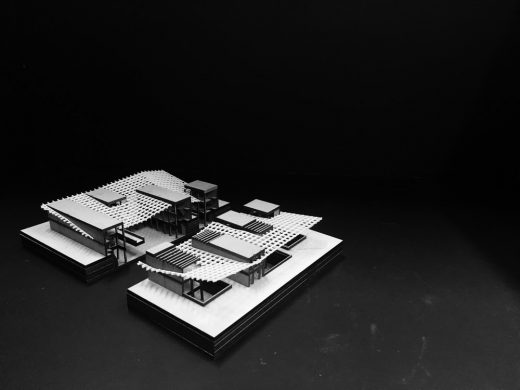
Second Year Student Projects at Edinburgh School of Architecture
First Year Student Projects at Edinburgh School of Architecture
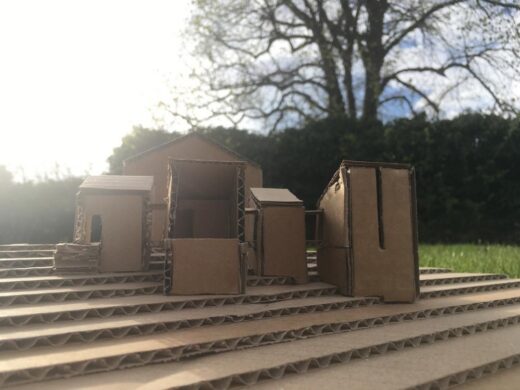
image courtesy of D L-W
First Year Student Projects at Edinburgh School of Architecture
Education Building Designs
Architecture and Landscape Architecture | Edinburgh College of Art
Abbotsford House Visitor Centre, Melrose, southern Scotland
Cairngorms National Park Authority HQ Building, Grantown-on-Spey, Moray, Northern Scotland
Comments / photos for the Saint Peter’s Seminary Cardross Study Part 2 page welcome

